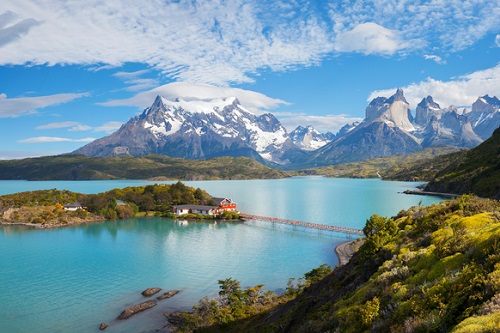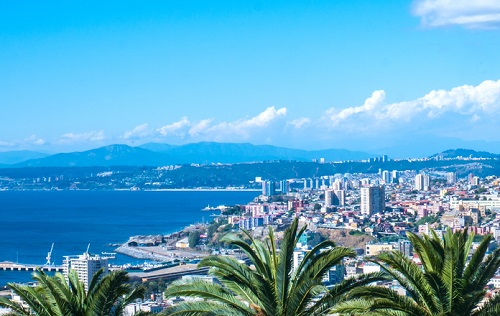According to the World Health Organisation (WHO), healthcare in Chile is the best in South America and 33rd best in the world. Chilean healthcare runs on a two-tier system. It has a public health insurance scheme, but people can opt out of this and choose private healthcare instead.
Getting public health insurance
Public healthcare in Chile is managed through the insurance scheme Fondo Nacional de Salud (FONASA). Policyholders contribute 7% of their gross salary (or gross taxable income, if self-employed) or pension (5% if the gross pension amount is between CLP 255,000 and CLP 286,000, and nothing if it is below CLP 255,000) in order to be covered by FONASA. If you are unemployed, then you are covered automatically when you receive unemployment benefits.
The 7% is capped at 4,921 UF (Unidad de Fomento – a Chilean unit of accounting), but this is equivalent to c. CLP 140,637,554.26 or USD 169,934.20 as of March 2020, so your salary needs to be quite high for you to benefit from the capping.
In order to begin contributing to FONASA, you need to have your Chilean tax identification number, the Registro Único Tributario (RUT), which is issued to you with your Chilean ID card (Cedula de Identidad).
To get your ID card, you need to:
1. Download and fill in the F4415 form (you can also collect the form from any Servicio de Impuestos Internos (SII) office)
2. Take the completed form (two copies if filled in electronically and printed), your original passport, a copy, and your visa to an SII office
3. Request a receipt with an internet code and username
4. Login to the SII website to get your electronic RUT (e-RUT)
Physical ID cards became invalid at the end of December 2017, so you no longer have to wait for your plastic card to arrive in the post. However, it can take time to get your e-RUT, so if you experience any delays, you will need to make sure you’re covered for the intervening period. For this purpose, you can get a temporary RUT.
You still need a permanent address for a temporary RUT, so if you do not yet have your accommodation confirmed, you will need a Chilean citizen or resident to act as your representative and sponsor your application. Once you have your electronic or temporary RUT, you can go to a FONASA office to register and find out how much your monthly contributions will be.

Getting private health insurance
FONASA comes as standard in Chile, but if you would like private health insurance, and providing that you can afford to and are eligible, you can take out a policy with one of Chile’s Instituciones de Salud Previsional (ISAPREs). ISAPRE coverage is common among expats, and some report being able to get this without an e-RUT or temporary RUT. Therefore, if you are having difficulty getting FONASA when you arrive in Chile, you could look into an ISAPRE plan to cover the intervening period.
There are twelve approved ISAPREs in Chile, but half are ‘open’ and half ‘closed’. Closed ISAPREs are only available to certain industries or companies, such as mining companies or banks. The open ISAPREs are:
• Banmédica
• Colmena
• Consalud
• Cruz Blanca
• Nueva Masvida
• Vida Tres
You can [ur=https://queplan.cl/]compare plans online to find the right policy for you. Policyholders pay an average of 9.2% of their income for private coverage.

Registering with the health system
The insurance you choose will determine not only your level of coverage but also where you can be seen and treated. Facilities in Chile are divided into publicly-funded hospitals and private clinics (clinicas). While both types have emergency facilities, for anything non-urgent you will need to make sure you go to an institution covered by your policy. Clinics are likely to be of better quality than hospitals.
You can still be seen if you do not have insurance, but you will have to pay for your treatment in full. Non-insured patients are referred to as particulars. If you are seen in an emergency, you will be asked to provide your insurance details and sign a pagare, whereby you commit to paying the bill for your treatment when it arrives.
You do not need to register with a local practice or institution to be treated, but you may need to contact your insurer before you are seen. There will be a co-pay fee for your visit or treatment, and while in some instances you can pay this when you get there (credit card is preferred), some insurers will require that you pay this in advance and get a bono, which you take with you. For instance, pregnant women have to purchase a bono PAD at around 37 weeks’ gestation to cover childbirth, provided they are considered low risk.
Healthcare infrastructure in Chile does not include a ‘family doctor’ system. There are general practitioners who still serve the function of assessing patients to refer them to specialists, but this takes place at hospitals and clinics, and you would not necessarily expect to be assigned to a particular doctor or to go to a local practice. However, if you have specific concerns, it is worth researching the institutions your policy covers to see which has the best facilities and practitioners to support your needs.
Registering yourself and your family with the health system in Chile will require some dedicated research, but it’s worth taking the time to make sure that your coverage is comprehensive and that your needs are fully attended to.

